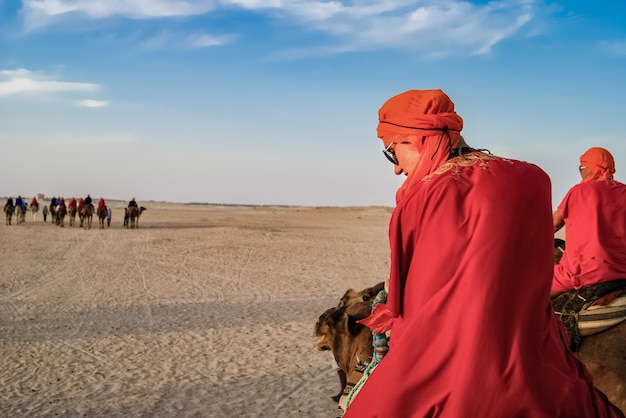The Cobra Gypsies, also known as the Kalandar or Kalandar nomads, represent one of India’s most intriguing and vibrant communities. With their centuries-old traditions, these nomadic tribes have thrived on a unique blend of performance art, animal husbandry, and resourceful living. Their connection to the majestic cobra and their mesmerizing street performances reflect a way of life deeply rooted in cultural symbolism, survival, and spirituality. This article delves into the world of the Cobra Gypsies, exploring their traditions, challenges, and the evolving dynamics of their nomadic existence.

A Rich Cultural Heritage Tied to the Cobra
The Cobra Gypsies’ identity is inseparably linked to the cobra snake, an animal revered in Indian mythology and spiritual practices. The Kalandar nomads have long been snake charmers, using their skills to entertain audiences with hypnotic melodies played on the pungi (a traditional wind instrument). For the Kalandars, the cobra is not merely an animal but a symbol of mystical power and protection. One remarkable example is the annual Nag Panchami festival, where Kalandars showcase their cobras in grand ceremonies, emphasizing their cultural significance. This deep connection with cobras underlines the group’s distinct identity in the Indian cultural mosaic.
Nomadic Traditions and Adaptability
Nomadism lies at the heart of the Kalandar lifestyle. Moving across regions, they adapt to changing environments and cultural landscapes to sustain their livelihoods. This flexibility reflects a core survival mechanism of the Kalandar people. For example, when the Wildlife Protection Act of 1972 prohibited snake capturing, the Cobra Gypsies shifted to other forms of performance art, such as magic shows and puppet displays, demonstrating their resilience. This adaptability showcases the community’s ability to sustain their traditions while navigating modern challenges.
Challenges in a Changing World
The Kalandar nomads face significant challenges in the contemporary world. Legal restrictions on their traditional practices and the loss of public interest in street performances have threatened their primary income sources. Additionally, the younger generation is often torn between preserving their heritage and pursuing modern education or careers. One study found that over 40% of Kalandar children are enrolled in schools, yet they struggle to balance their nomadic traditions with formal education. These struggles highlight the community’s precarious position in modern society.
Livelihood Beyond Snake Charming
Beyond snake charming, the Cobra Gypsies engage in various trades to make ends meet. These include livestock rearing, herbal medicine, and metalworking. An example is the flourishing blacksmithing trade among some Kalandar families, where they create agricultural tools for local farmers. This diversification of income sources not only helps sustain their nomadic lifestyle but also underscores their innovative approach to survival.
Spiritual Beliefs and Rituals
Spirituality plays a pivotal role in the lives of the Cobra Gypsies. Their rituals often incorporate offerings to snakes, prayers for prosperity, and celebrations of deities like Lord Shiva, associated with serpents. A notable practice is their nightly prayers by the campfire, where they chant hymns for safe travels and success in performances. These spiritual beliefs reinforce a strong sense of community and continuity of tradition.
Vote
Who is your all-time favorite president?
The Role of Women in Kalandar Society
Women in the Kalandar community hold a significant yet often overlooked role. They actively contribute to family incomes by performing dances, singing traditional songs, and crafting handmade goods. For instance, Kalandar women are known for their intricate beadwork and embroidery, sold in local markets. This underlines their integral role in sustaining their families while preserving their cultural artistry.
Education and Modern Aspirations
Education is increasingly seen as a pathway to empowerment among the younger generation of Cobra Gypsies. Organizations working with Kalandar communities have introduced initiatives to improve literacy and vocational training. For example, a vocational center in Rajasthan provides training in skills like tailoring and carpentry, helping Kalandar youth transition into stable livelihoods. These efforts illustrate the community’s gradual shift towards modern aspirations without entirely abandoning their heritage.
Preservation of Traditional Arts
Despite challenges, there are ongoing efforts to preserve the traditional arts of the Kalandar community. Cultural festivals and collaborations with NGOs have provided platforms for the Cobra Gypsies to perform their unique art forms. For example, the Surajkund Mela in Haryana annually showcases Kalandar performances, attracting audiences from around the world. Such initiatives highlight the importance of preserving their artistic legacy in a rapidly changing world.
Environmental Awareness and Conservation
The Cobra Gypsies have played an inadvertent role in raising awareness about wildlife conservation. By transitioning from snake charming to storytelling and educational performances, they educate audiences about the importance of protecting endangered species. A case study in Uttar Pradesh showed how Kalandar performers partnered with a local wildlife NGO to promote snake conservation. This shift emphasizes the community’s evolving relationship with the natural world.
Table: Key Aspects of Cobra Gypsies’ Lifestyle
| Aspect | Description | Example |
|---|---|---|
| Traditions | Snake charming and nomadic performances | Nag Panchami celebrations |
| Livelihood | Diversified income sources | Blacksmithing and herbal medicine |
| Modern Adaptations | Education and vocational training | Vocational centers in Rajasthan |
A Future Rooted in Heritage
The future of the Cobra Gypsies hinges on balancing their rich traditions with modern opportunities. Preserving their cultural identity while embracing change is vital for their continued survival. Governments and NGOs can play a pivotal role by providing resources and support for education, healthcare, and artistic platforms. As one Kalandar elder remarked:
“Our heritage is like a cobra’s dance—it captivates, but it must evolve to survive.”
The Cobra Gypsies are a testament to human resilience and cultural richness. Their story invites us to reflect on the importance of preserving diverse traditions in an interconnected world. Share their story, advocate for their rights, and support organizations working to empower these communities. Together, we can help sustain the legacy of the Cobra Gypsies while fostering a more inclusive society.